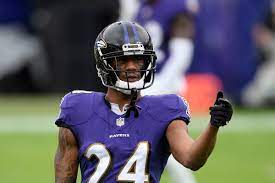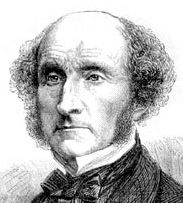This is the first of two pieces that look at the Ravens roster construction for the coming season. That roster will look much different than the 2021 version, particularly on defense. By my count (see below), the Ravens need nine starters and seven contributing backups. This is a lot to get done. Even with ten draft picks it’s unrealistic to expect the Ravens will fill more than four starter holes. Indeed, four starters would actually be a strong draft haul. I previously reviewed Eric DeCosta’s 2019 draft haul, which is here.
Given this reality, the Ravens will have little choice other than to abandon their traditional strategy of avoiding free agents who count against the draft compensation formula. It’s always great to accumulate draft choices – as Eric DeCosta regularly and rightly notes the more picks, the greater odds of finding starters.
However, worrying about garnering compensatory picks for 2023 shouldn’t be a focus this year. And it’s not just because the Ravens have so many quality needs. As well, the Ravens really only have one unrestricted free agent they will lose (Bradley Bozeman) who will count as a significant loss (probably a fourth or fifth rounder) in their favor under the compensatory formula. They might have a second (Anthony Averett) who could generate a lower round choice, as could Patrick Ricard. For 2022, this just isn’t a large enough consideration to steer the Ravens away from free agency. The needs are just too many.
Ravens Roster Construction – Roster Needs
Let’s take a look at roster needs.
Offense
| Starters Needed: | 3 – Tackle, center, fullback |
| Backups Needed: | 2 – Receiving tight end, wide receiver |
Defense
| Starters Needed: | 6 – Nose tackle, defensive end, edge rusher, strong-side linebacker, free safety, nickel corner |
| Backups Needed: | 5 – Cornerback (likely two), edge rusher, defensive line (likely two) |
Cap Space Availability
The Ravens roster construction for 2022 starts with cap space availability. As we sit here the Ravens have approximately $8.5 million of available cap space. But this will change as there will be several cap casualties.
The Cuts
 The almost certain release of both Alejandro Villaneuva (saving $6 million) and Tavon Young (saving $5.8 million) will put the Ravens at $20.3 million under the cap. Miles Boykin will also be gone (saving $2.5 million), giving the Ravens $22.8 million under the cap.
The almost certain release of both Alejandro Villaneuva (saving $6 million) and Tavon Young (saving $5.8 million) will put the Ravens at $20.3 million under the cap. Miles Boykin will also be gone (saving $2.5 million), giving the Ravens $22.8 million under the cap.
Sam Koch, at age 40, is the only other possible release, in my view. Koch’s departure would add another $2.1 million. Although some point to Ben Powers’ possible release as a source of another $2.5 million of cap space, I just don’t think that is realistic given the uncertainty along the offensive line.
Let’s assume Koch is released and the Ravens wind up at $24.9 million under the cap.
New Contracts for Players on the Roster
The big cap space variable then is Lamar Jackson. No doubt a deal with Lamar could free up $12-$15 million of additional cap space, but I’m betting that no deal gets done. Therefore, I’m assuming that $24.9 million is the number. If I’m wrong, that additional cap space most certainly will impact the Ravens’ free agency approach. I’ll delve much further into that in part two of this analysis.
Another wild card here, and an action that would likely tell us how much of a free agent splash the Ravens intend, is Marcus Peters.  As we stand today, Peters’ cap hit for 2022 is $15.5 million and he’s a free agent at the end of the year. The Ravens could save $10 million off of the cap by releasing Peters, but DeCosta made clear last week that Peters is going nowhere.
As we stand today, Peters’ cap hit for 2022 is $15.5 million and he’s a free agent at the end of the year. The Ravens could save $10 million off of the cap by releasing Peters, but DeCosta made clear last week that Peters is going nowhere.
At age 29 and coming off an ACL tear, should the Ravens extend Peters? How many top years could he have left? This is a big call for DeCosta. Could the Ravens extend him for, say, two more years (three years in total) and have a workable deal that drops his 2022 cap hit by, let’s say, $3 million? This is one to watch.
Exclusive Rights Free Agents and Restricted Free Agents
The Ravens will use some of their cap space on their own nine exclusive rights free agents (“ERFAs”) and restricted free agents (“RFAs”). Typically, the Ravens tender all of their ERFAs, who receive one-year deals at the applicable league minimum salary based on time of service (ranging between $705,000 to $895,000).
The Restricted Free Agent Decisions
The Ravens have two RFAs (Otara Alaka and Chris Westry). With RFAs, the Ravens are required to make one of four types of tenders. The first round tender at a $5.5 million cap hit is unrealistic.
A second round tender means the Ravens would receive a second round pick if the tendered player is signed by another team, but at a cap cost of $3.98 million. A low tender would give the Ravens a draft pick equivalent to the round in which the lost player was selected. But in the case of both Alaka and Westry there would not be any compensation because both players were originally undrafted. The cap cost to the Ravens for a low tender is $2.5 million. The final tender type is a right of first refusal (“ROFR”), allowing the Ravens to simply match a competing offer for the player (there is no draft pick compensation). The cap cost for a ROFR is $2.43 million.
I don’t see the Ravens making any tender to Alaka. However, Westry is another story and a tougher tender slotting. Because I think Tavon Young will be released, the Ravens would only have Humphrey and Peters as corners under contract. The Ravens should value Westry, as he has real upside and has shown strong man cover skills. Because a low tender does not give the Ravens any protection with Westry, the question is whether they will make the expensive second-round tender.
The strategy with Westry should be to pursue a multiple-year contract at a cap figure below the second round tender cost of $3.98 million. I believe there is a real risk that multiple teams will have interest in Westry if the Ravens make a low tender.
I believe the Ravens will retain Westry and I’m making a guess that his cap cost will be $3 million.
Salary Cap and the Rule of 51
NFL rules provide that during the offseason the Rule of 51 applies to calculate team salary cap. Under this rule only the highest 51 salary cap numbers count against the cap. As we sit here today, the Ravens have 48 players under contract. If they make all of the cap casualty cuts listed above, they will have 44 players under contract. Counting the ERFAs and Westry as an RFA, they will be well above 51 players.
Importantly, Westry’s full cap number will count against the cap, as will the cap numbers of the six most expensive EFRAs. In all, these players will absorb approximately $7.5 million of cap space, which would put the team cap space heading into free agency at approximately $17.5 million (assuming no Lamar or Peters deal).
Ravens Roster Construction – Free Agent Positional Targets
This is where the rubber hits the road. Which positions should the Ravens target in free agency? To me, there are two absolutely critical positional needs, offensive tackle and edge rushers. Free safety is arguably an equal consideration. At these positions, the Ravens need to acquire elite talent. In part 2 of this analysis, which follows soon, I focus only on free agents whose contracts have expired. Cap casualty players will be added to this list and could certainly change the analysis.

